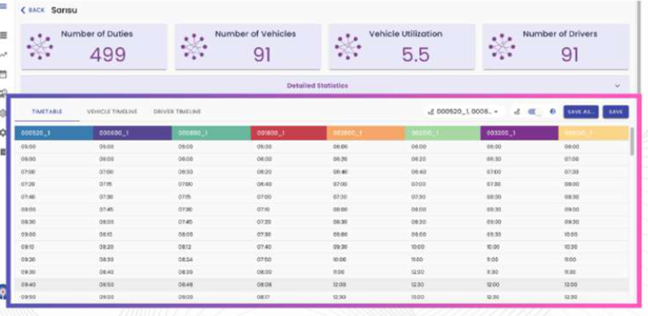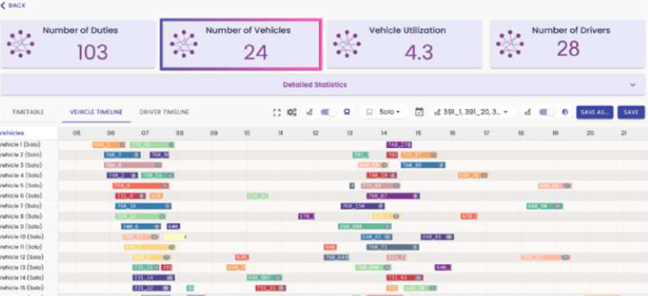🚍 Purchase a New Bus or Optimize the Fleet?
In cities across the Baltics — and around the world — public transport operators continue to invest in new buses. Electric, hybrid, diesel… all in the name of cleaner air, better service, and smarter urban mobility.
And while these upgrades are often necessary, one simple question is rarely asked:
Do you actually need more buses — or can your current fleet do more with less?
💸 The High Price of Overbuying Let’s be honest — a new bus isn’t just a vehicle. It’s a long-term financial commitment.
- €250,000 to €500,000+ per bus
- Ongoing costs: maintenance, insurance, fuel/energy, depot space
- Charging infrastructure (for electric buses)
- Additional driver and shift planning needs
But here’s the problem: many operators still make procurement decisions without knowing how well their existing fleet is actually performing. Are some buses running nearly empty?
Are routes outdated and inefficient?
Could better scheduling or smarter planning reduce the number of buses needed — without affecting service?
🔍 From Guesswork to Data-Driven Insight
This is where modern ITS tools like Cermoni make a real difference. Cermoni helps transport operators optimize timetables, assign vehicles and drivers efficiently, and analyze real-time data. The result? Smarter operations and reduced costs — without compromising quality of service. You can easily determine how many vehicles you truly need, create the most suitable schedules, and estimate cost changes based on operational improvements
🧩 Case Study #1: Antalya (Turkey) Challenge:
Digitalizing and optimizing vehicle and driver assignments
Fleet Size: 96 buses | Number of Routes: 13
▶ After optimization, the required number of buses dropped from 96 to 91
✅ Result: 5 buses saved through smarter scheduling and fleet use

🌍 Case Study #2: Modena (Italy) Challenge:
Digitalizing the assignment of vehicles and drivers
▶ Fleet reduced from 26 to 24 buses
▶ Number of drivers reduced from 31 to 28
✅ Result: 2 buses and 3 driver positions saved — with no drop in service quality

🤔 When Should You Buy? When Should You Optimize?
Of course, new buses are important — especially to meet emissions targets and improve rider experience. But if your existing fleet isn’t being used efficiently, purchasing more buses could just add more inefficiencies to an already stretched system.
✅ Before Your Next Bus Purchase, Ask Yourself:
- Do we know which buses are underutilized?
- Are we tracking real passenger demand by time and route?
- Could minor changes in routing or scheduling reduce peak needs?
- Are drivers operating efficiently in terms of fuel or energy?
- Do we have a clear, data-backed ROI for each new bus purchase?
🎯 Buy Smarter. Operate Smarter. Public transport is evolving — and so should the way we make fleet decisions. With a platform like Cermoni, you gain the tools to:
- Optimize operations
- Improve performance
- Avoid unnecessary spending
And most importantly — to make decisions based on real data, not assumptions.
Optimize first. Purchase with purpose. Operate with insight.
📩 Want to learn more about Cermoni or request a demo?
Let’s talk — we’re here to help you make smarter transport decisions in your city or region.